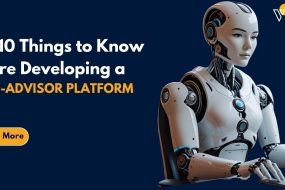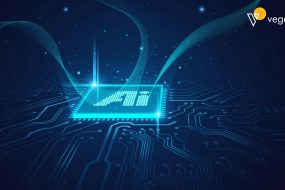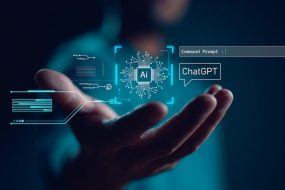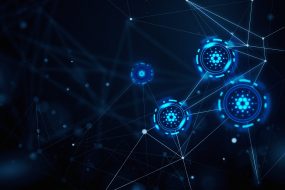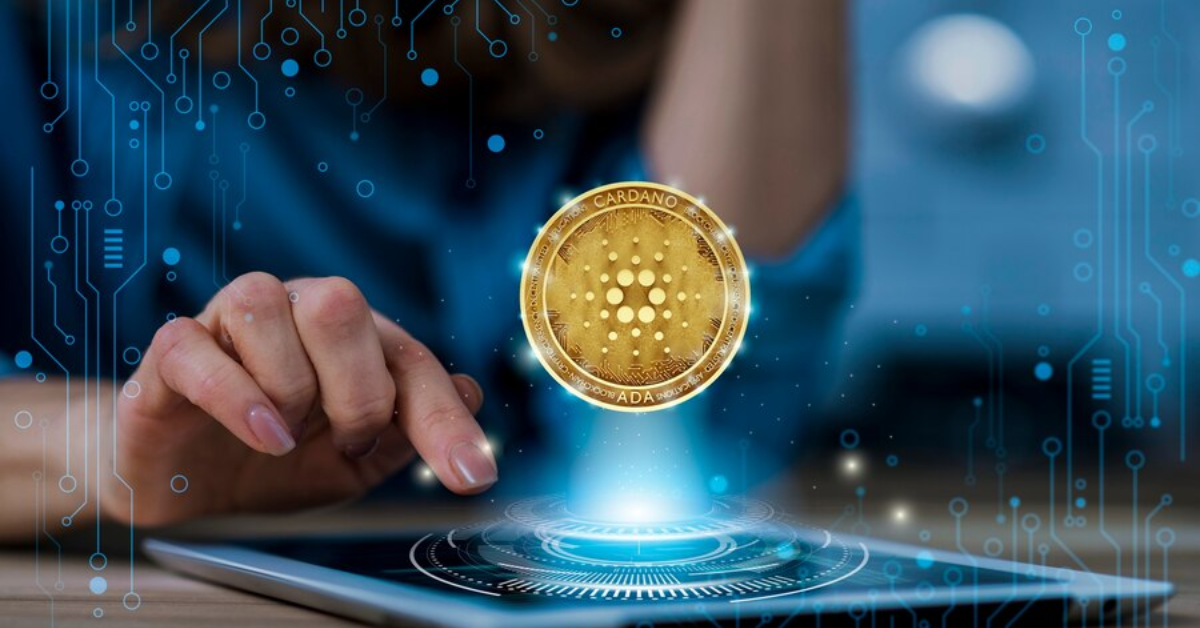
Artificial intelligence (AI) and blockchain are two of the most transformative technologies of our time. The integration of AI and blockchain is giving rise to a new class of cryptocurrencies and platforms – AI crypto coins.
AI crypto coins utilize AI technology to bring automation, predictive analytics, and machine learning capabilities to blockchain networks. They aim to make blockchain smarter, more efficient, and capable of supporting advanced applications.
For this article, the top 5 AI crypto coins were selected based on market capitalization, uniqueness of technology, strength of development teams, and long-term viability. These leading projects are pushing the boundaries of what’s possible by combining AI and blockchain.
The top 5 AI crypto coins redefining blockchain technology are:
- SingularityNET (AGI)
- Fetch AI (FET)
- Numeraire (NMR)
- Matrix AI Network (MAN)
- DeepBrain Chain (DBC)
In the following sections, we will explore each of these innovative blockchain projects leveraging AI, their unique value propositions, and the possibilities they enable. Together, these AI crypto coins paint a picture of how artificial intelligence is transforming decentralized networks and creating new paradigms in fintech, data analytics, automation, and more. The integration of AI with blockchain promises to unlock tremendous value and positively shape the future.
1. SingularityNET (AGI)
SingularityNET was founded in 2017 with the goal to decentralize the benefits of artificial intelligence. The network runs on the AGI token and provides an open marketplace where anyone can buy and sell AI services.
The AGI token is an ERC-20 utility token that is used to power transactions on the SingularityNET platform. AGI tokens allow both the buying and selling of AI services. Service requestors pay AGIs to AI service providers to access their services.
One key benefit of SingularityNET’s model is that it connects AI developers and users in a shared marketplace. This helps distribute AI in an equitable and democratized way, rather than having benefits accrue to big tech companies. It also incentivizes the development and continuous improvement of AI algorithms.
Recent metrics show the platform’s transaction volumes have been steadily increasing. In 2022, SingularityNET launched key updates like its beta platform on Cardano and a partnership with Ocean Protocol for monetizing AI data services. These developments help expand the reach and capabilities of the network.
Overall, SingularityNET’s decentralized AI marketplace aims to distribute the potential of AI technology more broadly, driven by the AGI token and aligned incentives between developers, users, and miners. The growth and evolution of the platform continues to progress.
2. Fetch AI (FET)
Fetch AI is an artificial intelligence-powered blockchain platform that connects machine learning, artificial intelligence, and multi-agent systems to deliver business value.
Fetch AI was founded in 2017 by Humayun Sheikh, Toby Simpson, and Thomas Hain. The founders saw an opportunity to leverage AI and blockchain to enable connected, digital representatives to autonomously operate on behalf of individuals, devices, and businesses.
The Fetch.AI network is powered by the Fetch.AI Autonomous Economic Agent (AEA) framework, which allows agents to exchange information and value with other agents. The AEA framework enables agents to have economic freedom and participate in markets, while also having flexibility to collaborate or compete with other agents as needed.
The Fetch.AI platform has a native utility token called FET that fuels transactions between agents on the network. FET tokens allow agents to tap into services provided by other agents and pay for tasks. As adoption of the Fetch.AI network grows, demand for FET tokens is expected to increase.
Fetch.AI has seen impressive growth recently through key partnerships. In 2021, Fetch.AI partnered with Bosch to explore use cases in areas like supply chains, manufacturing, and healthcare. Fetch.AI also partnered with Internet of Things company Helium to offer low-cost connectivity for agents. These partnerships help demonstrate the diverse real-world applications for Fetch.AI’s AI-powered blockchain.
As one of the leading projects at the intersection of blockchain, AI, and multi-agent systems, Fetch.AI shows tremendous promise to deliver AI-powered solutions across industries. The project’s growth trajectory and adoption of FET tokens will make it one to continue watching closely.
3. Numeraire (NMR)
Numeraire is an Ethereum-based cryptocurrency and blockchain protocol launched in June 2017. The project was created by the hedge fund Numerai to incentivize data scientists to build better machine learning models for Numerai’s stock market predictions platform.
The goal of Numeraire is to connect data scientists with capital in a way that aligns incentives towards building high-quality machine learning models. Participants compete to build the most accurate models for a chance to earn rewards in NMR tokens. The value of NMR is tied to the performance of the models, creating a unique staking mechanism.
The NMR token works as follows:
- Data scientists stake NMR to participate in Numerai’s data science competitions
- The stakes act as collateral to prevent potential attacks on the system
- The best performing models are rewarded with NMR from other participants’ stakes
- NMR supply increases when the Numerai platform is growing
- NMR can be burned to redeem fiat payments from the staking rewards pool
In December 2021, Numerai launched Erasure Quant, a decentralized network built on top of NMR tokens and staking for facilitating capital deployment into data science strategies. Erasure Quant aims to open up Numerai’s successful model to a wider audience through NMR-aligned incentives.
NMR’s market cap reached over $500 million at its peak in early 2018 before declining back below $10 million in 2019. More recently, the token has seen renewed interest, likely due to the Erasure Quant launch and increasing traction of prediction markets and “crypto quants” in decentralized finance.
4. Matrix AI Network (MAN)
Steve Deng and Owen Tao founded Matrix AI Network in 2017 with the goal of revolutionizing the blockchain space through the integration of artificial intelligence. The project is centered on constructing an open and adaptable infrastructure designed for intelligent contracts and machine learning services.
Some key points about Matrix AI Network:
- Matrix leverages AI techniques like natural language processing, computer vision, and predictive analytics to power intelligent contracts and decentralized apps. Intelligent contracts can adapt dynamically based on real-time data.
- The MAN token serves as the utility token to participate in Matrix’s proof-of-work consensus mechanism, as well as to pay for AI services like predictions, classifications, and recommendations through intelligent contracts.
- A core goal of Matrix is to develop more secure, transparent, and democratized AI models. By decentralizing data and models on the blockchain, Matrix aims to reduce bias, single points of failure, and misuse of AI.
- Recent developments include partnerships with OneGame to develop next-gen games using AI, and collaborations with others in the blockchain space like NEO. The roadmap is focused on intelligent contracts, security, and developer tools.
- Matrix has launched its testnet and plans to release its mainnet in 2019, which will be an important milestone for the project. The team continues to build out the platform and grow its application ecosystem.
Overall, Matrix AI Network brings some unique capabilities to the blockchain world by combining AI and intelligent contracts, with the goal of enabling decentralized, democratized artificial intelligence.
5. DeepBrain Chain (DBC)
DeepBrain Chain (DBC) is an innovative blockchain platform that distributes artificial intelligence (AI) computing tasks to thousands of nodes in its decentralized neural network. It aims to lower the costs of AI computing and data training through this distributed network.
The DBC token facilitates transactions, payments, and incentives on the DeepBrain Chain platform. Users or companies can acquire DBC tokens to pay for AI computing resources and compensate miners that contribute their GPU and computing power to the network. As demand for AI computing grows, the value of DBC tokens should increase.
Some key use cases for DBC tokens include:
Users pay for AI model training and machine learning tasks, distributing them on the network. The platform requires an increasing number of DBC tokens as the complexity of the algorithm rises.
Miners who supply GPUs and computing power to fulfill AI computing tasks on the decentralized network receive rewards in DBC tokens commensurate with their contributions.
Users can access AI models, algorithms, and neural networks that they have trained and developed on the DeepBrain Chain platform.
In the past year, DeepBrain Chain has secured several major partnerships to further expand its decentralized AI computing network:
- Collaboration with China Unicom and other telecom partners to access a network of millions of GPUs across China. This significantly grows DBC’s computing power.
- Partnership with NVIDIA and other GPU manufacturers to optimize hardware compatibility with the DBC network.
- Alliance with Singularity Studio to apply AI and machine learning to large-scale digital entertainment and media projects.
Despite the impacts of broader crypto market downturns in 2022, DBC has shown substantial growth potential long-term. As of Q3 2022, DBC is trading at $0.0014, up over 250% from its ATL back in 2018. With more partners joining the ecosystem, adoption of the network expands further.
The Future of AI Crypto Coins
The intersection of AI and blockchain is still in its early stages, but several trends are emerging that point to exciting potential in this space going forward:
AI Training on the Blockchain –
As AI models become more complex, training them requires immense amounts of data and computing power. Distributed computing on the blockchain enables pooling together resources for more efficient AI training. Startups such as SingularityNET are actively exploring decentralized marketplaces, where individuals can contribute their computing power and receive compensation in return.
Decentralized AI Services –
Much like decentralized computing, blockchain platforms like Fetch.AI allow the sale and purchase of AI services in an open marketplace. This reduces barriers and costs for accessing AI while enabling anyone to monetize their algorithms and data. More decentralized AI services are likely to emerge.
Crypto Trading –
AI and machine learning have already found applications in high-frequency trading within traditional markets. As the crypto space continues to mature, the prevalence of advanced AI trading bots, particularly for executing arbitrage strategies between exchanges, is anticipated. Numeraire stands out as a project dedicated to constructing a network that facilitates data scientists in collaboratively developing models for crypto trading.
Autonomous Systems –
Blockchain combined with AI, IoT sensors, and smart contracts enable decentralized autonomous systems that can operate independently to exchange goods and services. Matrix AI Network is working on the infrastructure for secure and efficient communication and exchange between autonomous systems.
AI Assistants –
Chatbots and voice assistants are gaining adoption for customer service. Soon, we may see the rise of AI assistants that leverage blockchain to operate seamlessly across applications and personal devices with improved security and privacy protections.
Overall, the use of AI in blockchain is still relatively niche but holds exciting potential that could enter mainstream adoption within 5-10 years. As AI algorithms and models rapidly advance, blockchain projects incorporating AI should gain momentum.
Conclusion
This article covered the top 5 AI crypto coins that are advancing blockchain technology through the integration of artificial intelligence.
The coins discussed were SingularityNET (AGI), Numeraire (NMR), Matrix AI Network (MAN), and DeepBrain Chain (DBC). Each offers unique capabilities powered by AI, from decentralized markets and autonomous infrastructure (Fetch.AI) to machine learning models and neural networks on the blockchain (Numeraire).
Some key takeaways include:
- AI crypto coins allow blockchains to utilize AI capabilities like machine learning and natural language processing to expand functionality. This can enable self-optimizing networks, predictive analytics, and more.
- Several projects are creating decentralized marketplaces for AI services through their crypto tokens. This provides infrastructure for AI development and deployment.
- AI crypto coins are adding computational power to blockchains by connecting networks of mining nodes optimized for AI processing. This opens up new potential use cases.
- Multiple platforms are advancing new models of AI development and collaboration through incentive structures and crypto-economic designs.
In terms of investment outlook, AI crypto coins remain speculative but have significant long-term potential to transform blockchain capabilities. As artificial intelligence continues advancing rapidly, integrating it with blockchain networks offers huge possibilities for optimization, automation, and innovation across industries. While still early stage, AI crypto coins are worth monitoring closely as an emerging trend that could define the next generation of blockchain advancement.
References
- PricewaterhouseCoopers Global Artificial Intelligence Study
- Forbes – 4 Ways AI Can Enable Blockchain To Further Revolutionize Commerce
- NASDAQ – Here are a Few Ways Artificial Intelligence and Blockchain are Working Together
- HackerNoon – How AI can enable a Smarter Blockchain
- SingularityNET Whitepaper
- Fetch.AI Whitepaper
- Numeraire Whitepaper
- Matrix AI Network Whitepaper
- DeepBrain Chain Whitepaper








